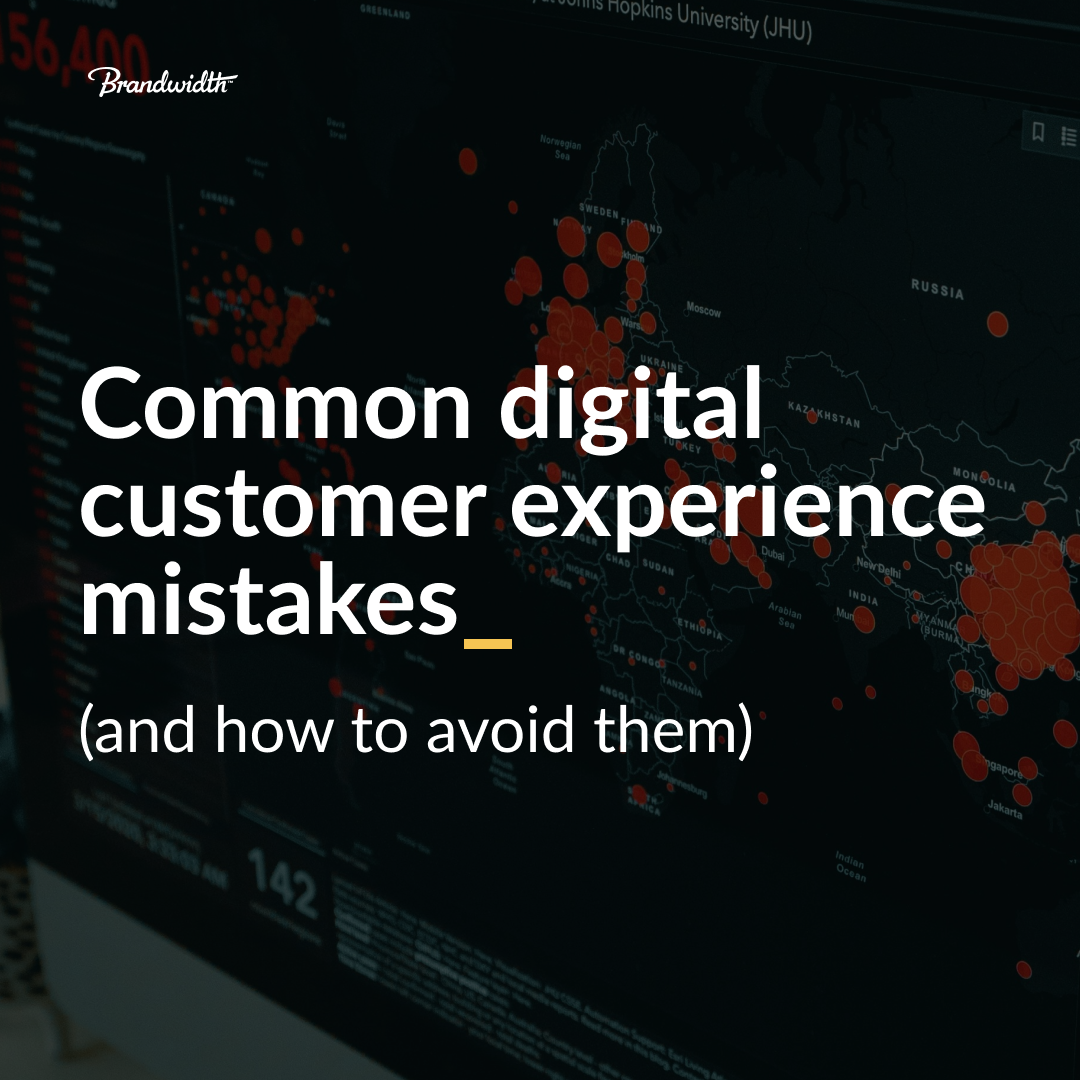






Picture this: it’s 2024. Five years after successfully launching your business you’ve found yourself in a rut. Sales have slowed, profits are declining, new products aren’t gaining as much interest, and you can’t put your finger on why. Your website is the same as it was when you launched and things were great then, so what’s changed?
The answer is nothing has changed. And that’s the problem.
According to Salesforce, almost 90% of buyers say their experience of interacting with a business is as important as the products or services they provide. And yet, at Brandwidth, one of the biggest challenges we see businesses facing is poor digital customer experience. Whether it’s an out-of-date website or failure to understand customer pain points, these mistakes can be costly. But luckily, they’re also easy to address.
Here’s a few of the most common digital customer experience mistakes, and how you can avoid them.
1) Ignoring customer feedback
Customer feedback is one of your most valuable data points, often highlighting issues within your digital channels before you notice them yourself. And yet, many businesses don’t actively collect qualitative feedback. And for those that do, the challenge is knowing how to implement it.
Step one is to make it easy for customers to provide observations about their experience with your business. By conducting surveys (on-site or via email), or carrying out customer interviews, you can quickly collect valuable insights into their pain points and needs.
Step two is to implement this feedback. What this doesn’t mean is making immediate changes each time you get a negative review. Instead, collate your feedback to identify common trends, prioritising challenges based on frequency and business impact, and use this to create a strategic roadmap of improvements.
2) Poor (or no) use of data
In addition to customer feedback, it’s crucial to gain an understanding of how your channels are performing by analysing user behaviour. Such data can reveal valuable insights into how users are finding your channels and the actions they carry out once there. Without this information, businesses are left guessing as to whether their channels are working as intended. For example, you might have a CTA (Call to Action) on every page of your website, but if users aren’t finding and clicking on them, you won’t see results.
There’s a wide range of data available, depending on how detailed you want your analysis to be. We’d recommend a combination of different data sources, such as traditional channel analysis and heatmapping.
Traditional channel analysis refers to the basic data available for each of your digital channels. For web, this might include visits, bounce rate, conversion rate, and time spent on site, but the metrics deemed important will differ from business to business, depending on goals and KPIs. Heatmapping allows you to understand how users are interacting with your website by looking at things like scroll and click rate to identify pain points.
This data should be reviewed regularly to identify recurring pain points so that strategic updates can be made on an ongoing basis, resulting in continued improvements to your customer experience.
3) No omni-channel strategy
Your website might be beautifully designed. It might have clear conversion points and a seamless user journey. It might even drive 80% of visitors to make a purchase. But if you’re not helping people to find it in the first place, you’re not going to see the results you want. This is where your wider channel strategy comes in.
By promoting your business and offering across multiple channels you increase brand awareness, which in turn helps to increase engagement, site visits, leads and sales. There are multiple channels you can use, including social, email, and paid search advertising (for the best results, we recommend a combination of channels depending on your business goals and audience base).
The key to success, however, is in the strategy. Instead of simply replicating content across your various channels, use the previously mentioned data to understand what kind of content works best for each of your channels and tailor your content accordingly. Not only will this prevent the risk of users seeing the same piece of content multiple times, but it increases the likelihood of engagement.
4) Failure to follow accessibility guidelines
All the factors we’ve covered up until this point are redundant if your digital channels alienate potential customers due to accessibility issues. Common failures include inaccessible colour combinations and a lack of alternative text for images, but the factors affecting accessibility stretch far wider than this.
The UK government’s Web Content Accessibility Guidelines 2.2 (WCAG2.2) are designed to help website owners accommodate for a range of potential challenges, including blindness, limited movement, and cognitive limitations, and will be enforced from October this year, with websites that fail to comply facing fines. There are multiple tools available to test your website’s accessibility.
For a truly inclusive experience, however, businesses should aim to look beyond complying with guidelines, and instead design with accessibility at the forefront. This means involving a range of users within the initial design process to create experiences and channels where everyone feels a sense of belonging.
These are just some of the challenges businesses face when using digital channels to connect with customers, but ultimately, the key to success is to continually optimise your user experience. Using customer feedback and data-led insight to make incremental improvements is a sustainable way to have a huge impact in achieving your business goals.
At Brandwidth, we help businesses to grow by optimising their digital customer experiences, through a range of services including strategy, design, data analysis, and development. If you need help with one of the topics mentioned above, or any other digital challenge, get in touch. Our experts will be happy to help you get to where you want to be.



Our dedicated team dives deep, delivering relentless value and aligning digital solutions with your goals in a way that guarantees success
Learn more